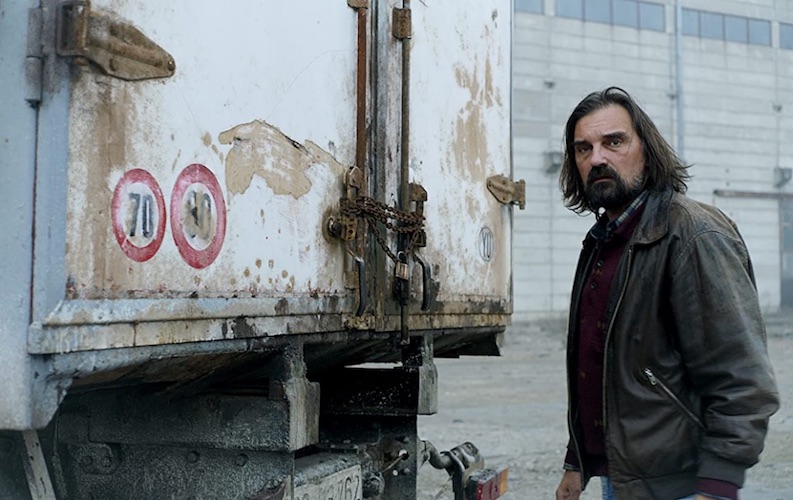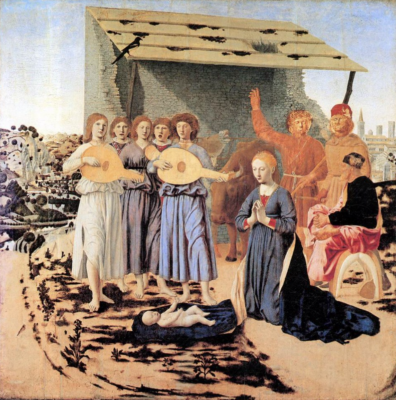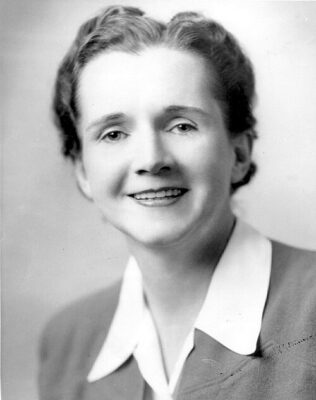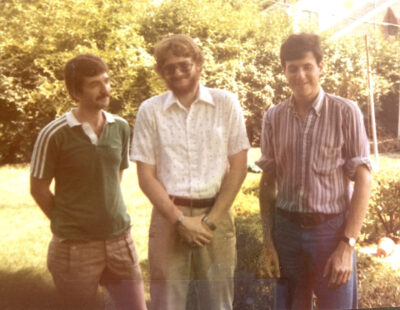
Not many films are made in Serbia. Fewer still get past its border. Fortunately for fans of world cinema, one of them, entitled The Load, gained international recognition at the 2018 Cannes film festival, and went on to win multiple nominations and awards around the globe. And now, it’s available on multiple streaming platforms.
The Load, a totally unique portrait of quotidian life during wartime, establishes its historical context with a title card informing us that the year is 1999, and the location is the Federal Republic of Yugoslavia. Serbian state forces have been engaged in Kosovo-Albanian ethnic cleansing. In response, NATO started bombing the entire country a few weeks earlier. The Load tells the deceptively simply story of a man named Vlada driving a cargo truck from Kosovo to Belgrade for Serbian authorities. He doesn’t know what he’s transporting. Perhaps he doesn’t want to know.
Vlada is a taciturn, dark-haired man, solidly built with a furrowed brow, eagle eyes, moustache, beard, and stringy hair. Wearing a leather jacket, he looks somewhere between a thug and a biker. But Vlada is a decent fellow, a family man who’s fallen on hard times and trying to earn a little cash to help support his wife and son. As Vlada surreptitiously progresses towards Belgrade, actual war is never shown, but implied, with the sound of jets thundering overhead, anti-aircraft fire erupting in the distance, and numerous scenes containing stray dogs, suggesting all manner of death and upheaval not far away. Looming over Vlada’s journey is the mystery of what’s in the back of his truck.
The filmmaking style is austere, the dialog sparse, the story mostly told visually – it’s an exercise in poetic minimalism. Gray skies blanket the desolate landscape with a foreboding sense of doom and gloom. The camera occasionally drifts away from Vlada to follow secondary characters; a man returning from who-knows-where to deliver bad news to a stoic woman, a hitchhiker’s wistful visit to the swing set he carved his name on as a child, a prostitute singing a song to herself about abusive men while walking home alone in the wee hours of the morning. These little stories within a story expand the boundaries of the main narrative, create the sense of a fully realized world, and give us a taste of the prevailing malaise of Vlada’s war-torn country.
Trees figure prominently, perhaps as a metaphor for life. Boney-looking and drab, even they look like they’ve suffered. And not unlike a tree, Vlada’s life is deeply rooted within Serbia’s history of political upheavals and bloody conflicts. The root symbolism becomes literalized in a poignant story about his father’s brother who went missing in action during the Nazi offensive of 1943. When Vlada’s father returned to the battlefield fifteen years later, he spotted a lone walnut tree, and immediately fell to his knees in tears, knowing he had found where his long lost brother was buried. Authorities dug up the ground beneath the tree, and sure enough, his remains were found, the tree having taken root from the pocket where he always kept his favorite snack – walnuts.
For casual filmgoers, The Load might prove frustratingly measured and opaque. But for those more comfortable with challenging, capital ‘A’ art house films, especially those intrepid film buffs who enjoy the works of Slow Cinema masters such as Bela Tarr, Hou Hsiao-Hsien or Apichatpong Weerasethakul, The Load is a must-see.
For KSQD’s Film Gang, this is Paul Kanieski.












